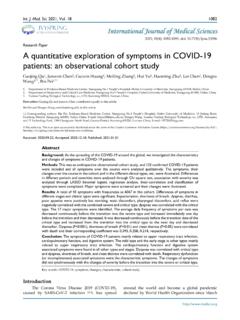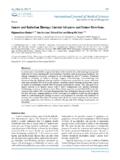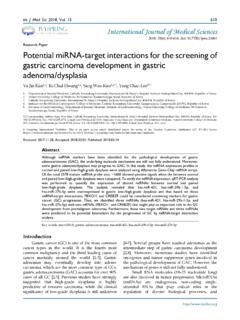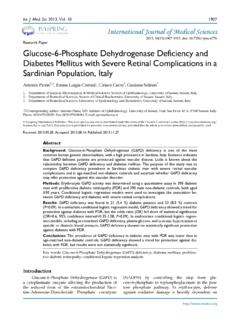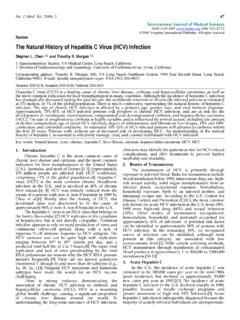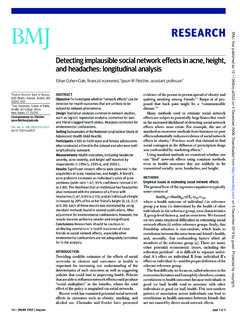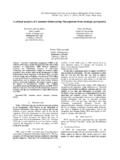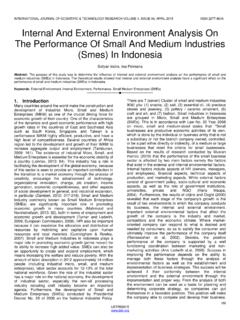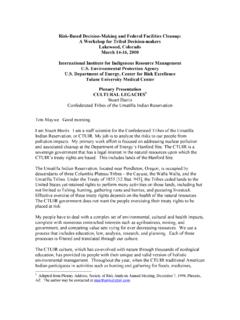Transcription of Review Risk Factors Contributing to Type 2 …
1 Int. J. Med. Sci. 2014, Vol. 11 1185 IInntteerrnnaattiioonnaall JJoouurrnnaall ooff MMeeddiiccaall SScciieenncceess 2014; 11(11): 1185-1200. doi: Review Risk Factors Contributing to Type 2 Diabetes and Recent Advances in the Treatment and Prevention Yanling Wu1,2 , Yanping Ding1,2, Yoshimasa Tanaka3 and Wen Zhang2 1. Lab of Molecular Immunology, Zhejiang Provincial Center for Disease Control and Prevention, 3399 Binsheng Road, Hangzhou, 310051, China; 2. Lab of Chemical Biology and Molecular Drug Design, College of Pharmaceutical Science, Zhejiang University of Technology, 18 Chaowang Road, Hangzhou, 310014, China; 3. Center for Innovation in Immunoregulative Technology and Therapeutics, Graduate School of Medicine, Kyoto University, Kyoto, 606-8501, Japan. Corresponding author: Yanling Wu, Lab of Molecular Immunology, Virus Inspection Department of Zhejiang Provincial Center for Disease Control and Prevention, 3399 Binsheng Road, Hangzhou, 310051, PR China; Tel: +86-571-87115282; Fax: +86-571-87115282; e-mail: Wen Zhang, Lab of Chemical Biology and Molecular Drug Design, College of Pharmaceutical Science, Zhejiang University of Technology, 18 Chaowang Road, Hangzhou, 310014, PR China; Tel: +86-571-88871507; Fax: +86-571-88871507; e-mail: Ivyspring International Publisher.
2 This is an open-access article distributed under the terms of the Creative Commons License ( licenses/by-nc- ). Reproduction is permitted for personal, noncommercial use, provided that the article is in whole, unmodified, and properly cited. Received: 2014. ; Accepted: ; Published: Abstract Type 2 diabetes is a serious and common chronic disease resulting from a complex inher-itance-environment interaction along with other risk Factors such as obesity and sedentary life-style. Type 2 diabetes and its complications constitute a major worldwide public health problem, affecting almost all populations in both developed and developing countries with high rates of diabetes-related morbidity and mortality. The prevalence of type 2 diabetes has been increasing exponentially, and a high prevalence rate has been observed in developing countries and in pop-ulations undergoing westernization or modernization.
3 Multiple risk Factors of diabetes, delayed diagnosis until micro- and macro-vascular complications arise, life-threatening complications, failure of the current therapies, and financial costs for the treatment of this disease, make it necessary to develop new efficient therapy strategies and appropriate prevention measures for the control of type 2 diabetes. Herein, we summarize our current understanding about the epide-miology of type 2 diabetes, the roles of genes, lifestyle and other Factors Contributing to rapid increase in the incidence of type 2 diabetes. The core aims are to bring forward the new therapy strategies and cost-effective intervention trials of type 2 diabetes. Key words: type 2 diabetes, genetic factor, lifestyle, treatment, intervention trial. Introduction Diabetes mellitus (DM) is characterized by chronic hyperglycemia and impaired carbohydrates, lipids, and proteins metabolism caused by complete or partial insufficiency of insulin secretion and/or insulin action.
4 There are two primary forms of diabe-tes, insulin-dependent diabetes mellitus (type 1 dia-betes mellitus, T1DM) and non-insulin-dependent diabetes mellitus (type 2 diabetes mellitus, T2DM). T2DM is the most common form of DM, which ac-counts for 90% to 95% of all diabetic patients [1] and is expected to increase to 439 million by 2030 [2]. In China, the latest statistical data show that diabetes and pre-diabetes are prevalent among people older than 20-year-old, with the percentages being and for T1DM and T2DM, respectively [3]. T2DM mostly results from the interaction among genetic, environmental and other risk Factors . Furthermore, loss of first-phase of insulin release, abnormal pulsa-tility of basal insulin secretion, and increased gluca-gon secretion also accelerate the development of T2DM [4, 5].
5 Although T2DM patients are generally independent of exogenous insulin, they may need it Ivyspring International Publisher Int. J. Med. Sci. 2014, Vol. 11 1186 when blood glucose levels are not well controlled with diet alone or with oral hypoglycemic drugs. In addition, people with T2DM are often accompanied by complications, such as cardiovascular diseases, diabetic neuropathy, nephropathy, and retinopathy. Diabetes and its associated complications lower the quality of people s lives and generate enormous eco-nomic and social burdens [6]. Epidemiology T2DM has become an observably global public health problem. Analysis of recent statistical data re-veals that T2DM has several new epidemiological characteristics. Firstly, diabetes keeps a steady in-crease in developed countries, such as United States and Japan.
6 And it is worthy of note that T2DM has become a serious issue at an alarming rate in devel-oping countries. It is predicted that T2DM will con-tinue to increase in the next twenty years, and more than 70% of the patients will appear in developing countries, with the majority of them being 45-64 years old [7]. Even today, seven out of top ten countries with the largest number of diabetes patients are low- or middle-income countries, including India, China, Russia, Brazil, Pakistan, Indonesia, and Bangladesh [7], among which the prevalence rates are and in India and China, respectively [8, 9]. Secondly, although advancing age is a risk factor for T2DM, rising rates of childhood obesity have resulted in T2DM becoming more common in children, teenagers and adolescents, which is a serious emerging of the epidemic and a new public health problem of signifi-cant proportions [10].
7 Correlations with and influencing Factors on T2DM Heritable genetic correlation. Genetic compo-nent: Although we have not completely elucidated the pathophysiology of T2DM so far, it is the case that the disease has a major genetic component. Higher con-cordance rates are found among monozygotic (96%) than dizygotic (DZ) twins in some [11, 12] but not all [13] twin studies, which has been a compelling evi-dence of a significant genetic component in T2DM. Moreover, 40% of first-degree relatives of T2DM pa-tients may develop diabetes, whereas the incident rate is only 6% in the general population [14]. Susceptibility loci: In addition to a considerable number of genetic components associated with T2DM, segregation analysis also suggests the poly-genic nature of T2DM. The susceptibility loci of T2DM have been discovered by genome-wide association studies (GWAS) since early 2007 [15-21].
8 Then, nu-merous GWAS conducted in different countries and ethnic groups have reported linkage signals at the same or different chromosomes with T2DM, and have successfully identified approximately 75 susceptibil-ity loci related to T2DM. Examples of candidate genes are KCNJ11 (potassium inwardly rectifying channel, subfamily J, member 11), TCF7L2 (transcription factor 7 like 2, the strongest T2D locus identified to date), IRS1 (insulin receptor substrate 1), MTNR1B (melato-nin-receptor gene), PPARG2 (peroxisome prolifera-tor-activated receptor gamma 2), IGF2BP2 (insu-lin-like growth factor two binding protein 2), CDKN2A (cyclin-dependent kinase inhibitor 2A), HHEX (hematopoietically expressed homeobox) and FTO (fat mass and obesity associated) gene. van Exel and his group found that low IL-10 production ca-pacity is also associated with T2DM [22].
9 It is worth highlighting that IL-10-1082A/G polymorphism is associated with T2DM susceptibility in Asians, but not in Europeans and Africans, which may be ascrib-able to various genetic background and environmen-tal exposures [23]. Some important susceptibility loci are listed in Table 1. Table 1. Susceptibility loci associated with T2DM discovered with GWAS. Gene Gene Region SNPs Population P-Value Ref. KCNQ1 rs2237897 Japanese 10-13 [24] rs2237895 Chinese 10-10 [25] rs231362 European 10-13 [26] rs2237892 Japanese 10-42 [27] TCF7L2 rs7903146 European 10-31 [18] KCNJ11 rs5219 European 10-11 [17] rs5215 UK 10-11 [19] IRS1 rs7578326 European 10-20 [26] MTNR1B rs1387153 European 10-15 [26] IGF2BP2 rs4402960 European 10-16 [17] rs6769511 European 10-16 [19, 24] CDKN2A/B rs564398 UK 10-6 [19] rs2383208 Japanese 10-7 [28] rs10811661 European 10-15 [17] HHEX rs1111875 European 10-10 [17] rs5015480 European 10-15 [29] PPARG2 rs1801282 European 10-6 [17] rs17036101 European 10-6 [30] Among these susceptible loci, KCNJ11 encodes the islet ATP-sensitive potassium channel ; TCF7L2 regulates proglucagon gene expression and produces glucagon-like peptide 1[31].
10 IRS1 has an effect on insulin action [32]; MTNR1B is correlated with endogenous ligand melatonin that mediates cir-cadian rhythm and affects metabolic regulation [33]; PPARG2 encodes a transcription factor for adipocyte differentiation [34]; IGF2BP2 is involved in pancreas development, growth and stimulation of insulin ac-tion [34]; HHEX affects cell development; and FTO predisposes to diabetes through acting on BMI (Body Mass Index) [35]. Meanwhile, many of these loci are Int. J. Med. Sci. 2014, Vol. 11 1187 also therapeutic targets for the extensively used pharmaceuticals of T2DM, for example, KCNJ11 and PPARG2 are targets of sulphonylurea and thiazoli-dinedione classes of drugs widely used for the treat-ment of T2DM, respectively [36, 37]. Nevertheless, there are still many unsorted loci for the T2DM pathogenesis.
